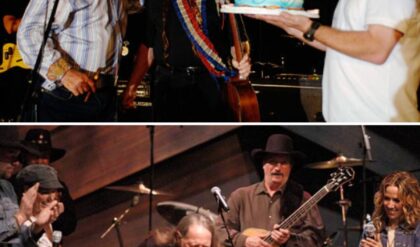A visceral chase scene in the second season’s final episode functions as a microcosm of the show’s overall philosophy.

The zombie-themed television series Black Summer, which debuted its second season in June, is about movement. To an extent, most post-George A. Romero zombie works are, since the undead’s uncanny power stems from the spectacle of physical activity persisting beyond the grave, stripping the living of exclusive rights to outwardly animate behavior. Black Summer, however, takes this contagion of movement and doubles down, narratively and stylistically foregrounding the brute matter of bodies—the “living” as well as the undead—and their traversal of space. Told through disjointed segments and composed largely of handheld long takes that track characters’ ground-level maneuvers, the show is striking for the way it deprives us of contextual narrative information with which we could orient ourselves. Rather than providing sweeping views of the fictional world, Black Summer keeps us claustrophobically confined to characters’ immediate surroundings. Instead of contriving story beats to help flesh out the impression that the people onscreen have rich interior lives, it minimizes such exposition, thus shifting focus to the exterior: less who these characters are, more what they do.
In some ways, it could be said that the show “zombifies” its characters through how intensely it foregrounds the physical mechanics of movement. Just as the undead are, in a sense, purely somatic, driven by their corporeal cravings rather than some “higher” sense of purpose or intentionality, so the show formally and narratively suggests that the “living” might not be so different. Perhaps the most emphatic, self-reflexive case of such zombification occurs in the couple scenes in which the handheld long takes—usually trained on the activities of the living—are suddenly attached to the appetitive rovings of a lone zombie. These moments are startling and unsettling in the way they remove any conventionally sentient, living character with whom we can comfortably identify. As the camera tracks the zombie’s perambulations in the same way that it does other human characters elsewhere in the show, the line between “living” and “dead” is blurred. On the one hand, we are invited to wonder whether zombies are, in fact, more human than we thought, perhaps containing some inkling of sentience or consciousness. On the other hand, we might ask if the human characters are themselves virtually zombies: pure carnal movement, lacking any agenda beyond basic subsistence.

“I have been dead a long time,” intones a character directly into the camera. About as explicit an articulation of the show’s zombification theme as one could ask for, this pseudo-soliloquy opens the second season’s final episode, which, as a whole, is arguably the most concentrated expression of Black Summer’s metaphysical concerns. Set in an airstrip on which numerous characters converge in an attempt to board a plane, the episode features one of the few overhead shots to appear in the series: a god’s-eye view of pinprick-sized bodies flowing like bacteria in a petri dish, a visual telescoping-out that ironically serves to intensify rather than relieve the sense of characters’ earthbound isolation from each other, since no one person could ever hold such a synoptic vantage point (except, perhaps, from a plane, which accrues allegorical significance in this episode).
The most powerful distillation of the show’s interest in movement mechanics, however, occurs in a segment, subtitled “Mance,” in which the eponymous character spends several, grueling minutes fleeing and fending off a veritable army of the dead. Even by the show’s own standards of attenuated characterization, Mance is a stranger to us. We had seen him only a few times this season, and always as a part of a larger ensemble of characters, never by himself. As such, our attention is, even more than usual, concentrated on the “what” rather than the “who.” Furthermore, the show’s long-take aesthetic is here pushed to an extreme: the scene sustains the impression of a single, unbroken shot whose momentum is largely maintained even through moments in which cuts have clearly been hidden. Cleaving tightly to the trajectory of Mance’s almost continuous sprint, this segment is a tour de force of desperate, unrelenting motion that forces us to feel every passing second and every inch of ground covered. Throughout, the mise-en-scène is almost always overstuffed with objects, which obstruct (though sometimes facilitate) Mance’s movements in such a way where each successful step on the path to freedom—clambering into the rafters of a warehouse, burying an axe into a zombie’s head—feels extra labored, given the obstacles that had to first be cleared. 


As the action travels from one building to another, winding through seemingly every nook and cranny of the airstrip, the scene acquires a mounting sense of choreographic virtuosity. Even as the single-take aesthetic heightens our immersion in the scene’s propulsiveness, it also becomes increasingly noticeable as a technical accomplishment, given the manifest difficulty of coordinating all the moving parts for a longer shot rather than a shorter one. As we become increasingly aware of the shot as a choreographic feat, we are also more inclined to see the onscreen zombies as stunt people, especially since the scene involves not just running across an open field but more intricate physical engagement with a relatively complex and variegated set. Virtuosity guides attention to the virtuoso, and, in this case, it has the interesting effect of further obfuscating the show’s dead-living distinction: all onscreen figures are rendered equal in their status as bodies exerting themselves for the sake of the camera and the larger choreography. Once more, “human” and “zombie” are joined by their shared reduction to movement mechanics.
Many action scenes are structured according to a logic of ebb and flow, of violent movement being modulated by a beat or two of quiet. The Mance segment, though rhythmic in other ways, doesn’t slow down for the length of the chase. For five of its six minutes, the pursuit continues at panic-pitch intensity, one felled zombie giving rise to two more, each turn of a corner bringing a fresh wave of danger. The experience is as exhausting as it is scary; when the violence finally subsides, Mance’s dazed, tremulous walk registers the physical toll of the experience. As he stumbles outdoors and drops to his knees, the camera hangs back, viewing him from the other side of a doorframe. His palpable fatigue feels as existential as it does physical. All this commotion, this straining of every bodily fiber, for what? Just to get a breath of fresh air? Just to stay alive long enough before the next crisis arrives? What’s the point?

The insistent focus on the mechanics of survival in this scene and Black Summer in general would seem to imply that there is no point, at least none that we can see. As the show suggests, all our grand narratives and speculative probing about the future are, in a sense, reducible to the brute reality of our present bodies, the material fact of our individual existential situations. Ultimately, the here and now is all we know. Periods of crisis shatter the perceived certainty of the future and hence throw this reality into bold relief, but it is a reality that was always already there, haunting our best-laid plans.
“We can’t tell what’s ahead. We’re in the clouds now,” says the pilot of the plane to the single person who successfully boards. “That’s all that matters, now. Right?” Posed as a question and received with first a smile then an exhausted closing of eyes, this line of dialogue can hardly be called optimistic. But it does represent Black Summer at its most soberly hopeful, and in a way that doesn’t undermine the materialist philosophy of prior episodes but, rather, inverts our relationship to it. Instead of despairing at the lack of some abstract, transcendent “point,” Black Summer’s second-season denouement locates meaning in the physical and experiential fullness of the present. When Mance teeters outdoors post-chase, the moment can be read as signifying the absurdly little that is gained by so much effort. But maybe scarcity is, when viewed differently, actually plenitude: the sensation of breeze on skin, the glint of the setting sun, the feeling of one’s own body as still moving, still here.
The Action Scene is a column exploring the construction of action set pieces, but it also considers “scene” in the sense of field or area: “action” as a genre and mode that spans different cultures and historical periods. By examining these two levels in tandem—one oriented toward aesthetic expression, the other toward broader contexts and concepts—this series aims to deepen appreciation for and spark discussion about action cinema.




